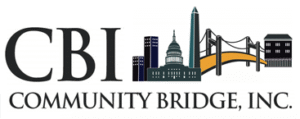
February 2025 – CBI Teams with facilities leaders to solve complex challenges that require balancing operational efficiency, long-term planning, and stakeholder expectations. To achieve excellence in this field, facility managers must adopt systematic approaches and prioritize initiatives that yield measurable outcomes.
This guide outlines seven foundational keys to success, addressing common challenges faced by facilities professionals, including budget constraints and the need to adapt to evolving technologies.
1) Set SMART Goals Aligned with Organizational Objectives
Clear, strategic goals serve as the foundation of effective facility management. By setting SMART (Specific, Measurable, Achievable, Relevant, and Time-bound) objectives, managers can align daily operations with broader organizational goals.
Actions:
- Define short- and long-term goals that reflect the organization’s maintenance and operational priorities.
- Use performance metrics such as energy savings, reduced downtime, or cost optimization to measure progress.
- Communicate these goals to all stakeholders to ensure alignment and accountability.
2) Regularly Assess the Condition of Facilities and Infrastructure
Facility assessments are essential for identifying emerging issues, monitoring asset performance, and making informed decisions about timely repairs and upgrades.
Actions:
- Conduct comprehensive evaluations of building systems, equipment, and infrastructure on a regular schedule.
- Use the data from these assessments to prioritize areas that require immediate attention or long-term investments.
- Consider partnering with third-party experts for specialized inspections or audits when necessary.
3) Develop a Long-Term Facilities Plan
Strategic planning enables organizations to adapt to evolving needs, technological advancements, and budget constraints. A master facilities plan acts as a roadmap for achieving operational and growth objectives.
Actions:
- Analyze future facility requirements in light of business expansion, organizational objectives, and industry trends to inform informed decisions.
- Outline actionable milestones, such as retrofitting old systems, expanding spaces, or adopting greener technologies.
- Incorporate flexibility into your plan to allow for market or regulatory changes.
4) Implement a Robust Preventive Maintenance Program
Preventive maintenance is central to extending the lifespan of assets, minimizing downtime, and reducing unplanned repair costs. PM programs shift the focus from reactive repairs to proactive care.
Actions:
- Develop a detailed preventive maintenance schedule that specifies tasks and their frequency based on manufacturer recommendations.
- Utilize Computerized Maintenance Management Systems (CMMS) to automate preventive maintenance (PM) schedules and track work orders.
- Collect and analyze key maintenance performance indicators (KPIs), such as mean time between failures (MTBF) or cost per repair, to optimize the program.
4) Leverage Technology to Enhance Operations
Advancements in technology, such as Internet of Things (IoT)-enabled devices and data analytics, are revolutionizing facility management. Leveraging innovative tools can enhance efficiency and inform better decision-making.
Actions:
- Adopt IoT devices for real-time monitoring of energy consumption, equipment performance, and environmental conditions.
- Utilize data analytics tools to forecast maintenance requirements and refine building systems for enhanced cost efficiency.
- Enable mobile access to key platforms for maintenance crews, ensuring tasks can be managed collaboratively and remotely.
5) Ensure Clear and Consistent Communication
Effective communication fosters collaboration between facility teams, vendors, and other stakeholders, ensuring alignment and cohesive decision-making.
Actions:
- Establish dedicated communication channels for sharing updates, work orders, and progress reports.
- Build strong relationships with vendors to secure reliable services and negotiate cost-effective contracts.
- Provide continuous training to staff, ensuring they possess the necessary expertise to address evolving operational challenges.
6) Prioritize Safety in Facility Management Activities
Safety and compliance are cornerstones of effective facility management. Facilities operating with secure practices reduce liability risks and improve occupant confidence.
Actions:
- Regularly inspect equipment and infrastructure for potential hazards, documenting findings and corrective actions.
- Ensure compliance with OSHA (Occupational Safety and Health Administration) standards and other relevant regulations.
- Implement security measures, such as access controls, and provide ongoing safety training to employees to ensure a secure and safe work environment.
7) Unlock Your Facility’s Full Potential
Managing a facility is no small task, but these seven keys provide a blueprint for success. By setting clear goals, adopting preventive strategies, leveraging technology, and prioritizing safety, facility managers can solve complex challenges while optimizing operations and boosting productivity.
For facilities managers seeking a trusted partner, Community Bridge, Inc. (CBI) offers a full range of Facility Management support services, including IT Infrastructure and Administrative support, Commercial Cleaning and Janitorial Support, and Landscape Management. We ensure our client’s properties and buildings remain efficient, safe, and aligned with organizational goals, ultimately contributing to long-term growth and sustainability.
Contact us today to discover how we can support your facility management objectives.

